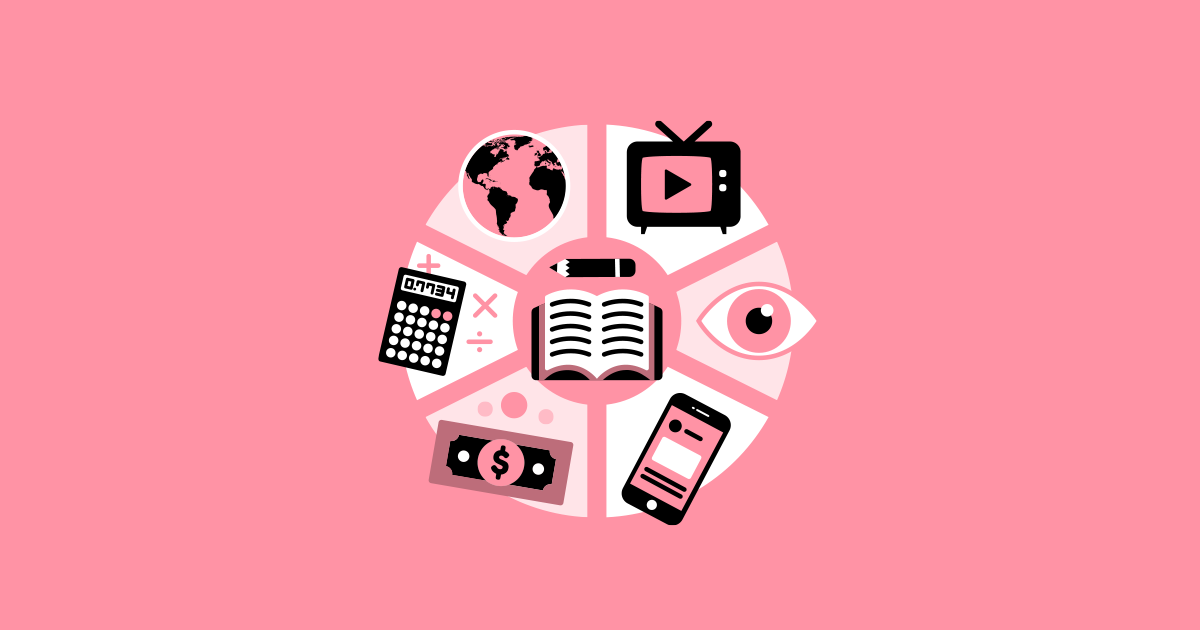The Multimodal, Multisensory, Multicultural Power of Multiliteracy Learning

June 12, 2025

Share this post
Once upon a time, literacy skills referred to reading and writing. However, we now access and process information in multiple ways, not simply through interpreting texts. Therefore, we need to support learners to develop multiple literacy skills to help them navigate the world successfully.
In this post, I'll explore the more complex and intertwined nature of the various literacies learners need, and how to integrate them into the English language classroom.
Multiliteracies
There are various interpretations and classifications of multiple literacies. These depend on the organization and their goals. These often include literacies such as:
- Textual Literacy (also referred to as Reading and Writing Literacy)
- Critical Literacy (the abilility to think critically and question sources of information)
- Information Literacy (aka Media Literacy)
- Visual Literacy
- Digital Literacy, which could also include Social Media and AI Literacy
- Financial Literacy
- Mathematical or Numerical Literacy (aka Numeracy)
- Global Literacy (aka Intercultural, Cultural, or Social Literacy)
In some ways, there is crossover between life skills development and multiliteracy development. For example, mathematical literacy could also be referred to as math or numeracy skills. Likewise, visual literacy requires other skills such as critical thinking, interpretation, and creativity.
You can read more about life skills development here:
6 Tips for Incorporating Life Skills into Your English Language Lessons
Multimodal
The information we interact with today is multimodal. Therefore, in order to prepare learners for the real world, we need to equip them with a variety of literacy skills to interpret and use it successfully and responsibly.
Here are some examples of the different modes of information sources:
- Photos
- Videos
- Infographics
- Diagrams & Graphs
- Illustrations & Artwork
Students can be guided to develop their skills in understanding, interpreting, and creating the content within these information sources. In order to do so, they will need to use multiple literacies.
Luckily for teachers, many resources are already full of multimodal texts. For example, let's use some of Ellii's money-themed lessons.
Word Bank Readers: At the Bank
At first, learners watch the video. They use their textual literacy skills to read the subtitles and write down notes. As they watch, they use their visual literacy skills to follow the story of Sheila going to the bank. After watching, they might discuss what problems Sheila had and how she solved them, utilizing their financial, digital, critical, and social literacy skills. They could personalize this further by comparing alternative ways to do this, such as using their digital skills to bank online. To incorporate global skills, they could investigate currencies or banking differences around the world.
You can access this lesson here: https://ellii.com/video/a-trip-to-the-bank
As extension tasks, learners could use their digital literacy to work through the tasks in their Ellii Classroom.
They could also:
- activate their global and visual literacy by discussing this intriguing photo prompt: Money, Money, Money

- use textual and visual literacy to watch and take notes of this self-study video: At the Bank
- Explore their financial literacy more with this lesson on Retirement Savings
- Have them use their digital and media literacy skills to create a vlog, podcast, or blog on the topic
Multisensory
The multimodal nature of information consumption is a multisensory process. Learners will interact with the content using a range of senses. This can help them to learn through doing as well as keeping them motivated by adding variety and movement to classroom activities. For example:
- listening to a story
- reading a text
- talking to a partner about the topic
- writing notes or an article
- performing a role-play
- smelling or tasting food from a recipe they followed
- creating a poster or information board
Multicultural
English language classes are often multicultural. Our learners bring a wonderfully unique blend of beliefs, experiences, cultures, and backgrounds to class. Helping them to develop their social, emotional, and global literacies aid intercultural understanding and can facilitate some interesting real-world discussions.
Here are some Ellii materials you might want to use to incorporate global literacies:
Easy News Stories: These simple news articles cover a range of real-world topics. They are perfect for having students consider unfamiliar cultures, learn about global challenges. and consider ways that they can make the world a better place.
Associated Press Videos: These short video clips cover diverse topics such as K-pop culture, mental health, and religious festivals. Students will enjoy using their visual and media literacy skills to explore authentic topics of social, emotional, and global importance.
You may also be interested in this blog post on social-emotional learning, which shares some ways to develop learners' social and emotional literacies.
We also highly recommend watching this video of Nik Peachey's session on Multimodality in the English Language Teaching and Learning at the APPI Conference in Portugal.
What experience do you have of incorporating multiliteracies into the classroom? Which ones do you feel are particularly important to your learners? We'd love to know your thoughts, ideas, and tips in the comments.
Comments
There are no comments on this post. Start the conversation!